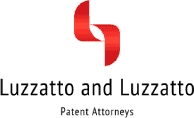


The life sciences industry differs from many others, from the investor’s point of view. While the return on investment from a successful development may be huge, the hurdles that must be overcome are many and, in most cases, serious.
Almost every R&D project in the life sciences industry requires substantial investment and it may take years before a successful product is approved for marketing. These factors magnify the importance of IP (mostly patent rights) as a determining factor for the success of investment in the field. Unfortunately, together with other issues discussed further below, they also severely complicate the management of the IP factor in life sciences projects. It is important that life sciences investors appreciate both the dangers of mismanaging IP and the opportunities arising from successful management. Such an understanding is also an invaluable tool in deciding on prospective investments.
The cost of R&D
Independent investors typically seek to invest in the early stages of a life sciences project, when a relatively small investment – in the order of between a few hundred thousand dollars and a few million dollars – can buy a substantial share of the equity. to secure exclusivity, the project will not progress to the next level of investment. However, it is not only a lack of patent protection that may scare big companies away: an overly aggressive patenting policy that does not take into account the time factor may also achieve the opposite of the desired result.
The length of the R&D process
Life sciences investors must necessarily be patient people. It may take several years (in many cases 10 years or more) from discovery of the first results in the lab to the launch of a commercial product. This means that the patenting process must be carefully paced, so that by the time the product is on the market, meaningful patent protection remains available for a reasonable length of time. This in turn means that mistakes which might spoil the opportunity to obtain commercially important patent protection at the right time must be avoided. From the investor’s point of view, therefore, one of the issues that the due diligence process should address is whether the inventors have already made irreparable mistakes that will make it difficult or impossible to find a suitable commercial partner further down the line.
Of all mistakes that inventors commonly make, the most damning is probably an attempt to foresee and cover, in the basic application, each and every future (often futuristic) use and application, along with all possible forms that the invention may take. Such projections, made at an early stage, may serve no useful purpose, and in the worst-case scenario may foil any future attempt to cover commercially important aspects of the product. Let's look at a simplified example.
An inventor synthesises a molecule and tests it on a cell line in a Petri dish. He finds some activity there and thus tests the molecule on a few rats. The results show activity against disease X. The inventor then files a patent application in which he hypothesises a utility of his molecule against a number of diseases that have some common trait with disease X, among them disease Y. The patent application is eventually published, as are scientific papers describing the work relating to disease X. As the work progresses and the years go by, it emerges that the illness against which the molecule is really effective is not disease X, but disease Y. Unfortunately, at the time the basic patent application was filed, no data was available regarding the treatment of disease Y, so it is doubtful that the originally filed patent application affords any protection for it. Moreover, the modifications that must be made to the invention so that it can be used to treat disease Y are trivial, so a patent application intending to cover it cannot be filed or, if filed, is rejected. This happens six or seven years after the original experiment, after several million dollars of the investor's money have been spent. There may be no cure for this situation, because no matter how successfully a product may be developed commercially to cure disease Y, nobody will pour hundreds of millions of dollars into it without any real chance of reaping a profit.
This simplified example reflects a not uncommon situation, the gravity of which is seldom appreciated. There are many less obvious ways in which effective patent protection for a future commercial product can be torpedoed by an inventor who does not appreciate the timescale within which the project will develop. The human desire to embellish one's achievements and to create a more appealing deal for the first investors can ultimately frustrate the end result.
Validity issues
Evaluating the validity of patents and the potential for obtaining valid patents can be extremely difficult in some life sciences projects. This is particularly true in the biotech industry, because of the vast body of knowledge that is published each day and the many ways in which results can be published. A brief anecdote illustrates this point.
A few years ago, I was asked to give an opinion on the validity of a patent relating to the manufacture of a certain enzyme. The inventors had isolated the DNA sequence that encoded it and patents had been granted for it in many countries around the world. The assignee was a prestigious institute and the patents had been thoroughly reviewed by examiners in the United States, Europe and Japan, among other jurisdictions. A huge pile of references had come up in the course of those examinations, none of which anticipated the invention. The picture looked promising and my client intended to invest a substantial sum of money. I wanted to be convinced that everything was in order, but something kept nagging at me, so I reread the pile of articles until I found the problem. A footnote in an article published after the filing date of the application (which therefore was not relevant to the validity of the patent) said, in reference to the DNA sequence, "Gene Bank number X". When we finally obtained the record from the Gene Bank, we discovered that the sequence had been deposited by a third party (and hence made public) a few weeks before the filing date of the patent application, which rendered all patents invalid. The institute had spent hundreds of thousands of dollars to get the patents issued in many countries and examiners all over the world had failed to notice that little footnote. A bad investment was thus prevented, but it could easily have gone through. The mistake made by examiners and inventors alike was understandable – indeed, almost unavoidable. This kind of error may happen again and again as the amount of information released each day grows to an extent that becomes very hard to manage, in spite of the enhanced search tools which are continually developed to cope with the explosion of information.
It is important for life sciences investors to appreciate the difficulties inherent to many types of project. Sometimes investors assume that the mere fact that a patent application has been filed means that protection is imminent. A sometimes blind reliance on patent applications at the early stages creates a false sense of security, and investors that take comfort in patent applications may scrutinise other aspects of the project less closely as a result. Patent applications are merely a tool that must be used correctly; if planned thoughtfully, meaningful and valuable patent protection may result. A patent application, however, does not mean that "everything is all right" and may actually sow the seeds for subsequent disaster, as explained above.
Further pitfalls
Because of their nature, many life sciences projects originate in academia. As a result, investors should be aware of some common issues that must be clarified before they part with their cash.
Identity of the inventors
The identity of the inventors is of vital importance for a variety of reasons – not least in determining the rights of the parties involved. Furthermore, in order to maintain the validity of a US patent, care must be taken to name only the real and actual inventors. This conflicts with the common academic practice of including in the list of authors of scientific papers the names of each "contributor", even though their contributions may have little or nothing to do with the scientific work done. For instance, someone who provided an important piece of equipment may be listed as a token of gratitude alongside the scientists who did the actual research work. As explained above, this is unacceptable for a patent application, which must list only the actual inventors.
Parties involved
Life sciences inventions often require the collaboration of scientists with very specific expertise. As a result, they are often made by a team of scientists working in different places. Since the scientists are normally employees of the institute where they carry out their research, the resulting invention will be a "service invention” – that is, it will belong to the institute and not to the scientists. The scientists are remunerated for the invention in the manner specified in the bylaws of the institute where they work. However, the partner with which the investor will have to deal is the institute or, often, two or more institutes. This situation demands that clear agreement be reached, before any investment is made, as to the role of each institute, the way in which the money will be used to perform R&D activities and so on.
The smaller the number of players involved, the better for the project. Therefore, emphasis should be placed on preventing the nomination of contributors who are not inventors in patent applications relating to the project. However, to avoid issues further down the line, it is important to determine at the outset whether any such non-inventor contributors are entitled to remuneration for their contribution and to reach agreement in that respect.
Third-party rights
Much academic work is funded by various sources such as research grants, government money or funds, equipment and manpower that are employed in another project. Experience shows that university professors are not always aware that their use of money and equipment may give rise to third-party rights. As a result, demands may be made at a later stage by an entity that was unaware
of the project before it achieved some degree of success. Investors should therefore be aware of such potential issues, which should be fully investigated in the course of the due diligence process.
Conclusion
IP is a critical factor in every life sciences project. This brief overview merely points out some of the commonest misconceptions and pitfalls which can be avoided simply by exercising awareness. More sophisticated, less obvious problems exist which cannot be generalised, but which entail risks for investors in the field. The discerning investor will thus exercise great caution before investing in a life sciences project and would do well to demand a measure of control over patent strategy, which generally should not be left in the sole hands of the inventors.

The difficult we do immediately, the impossible takes a little longer.”
Relevant Articles
Regarding Patent Term Extensions in Israel
